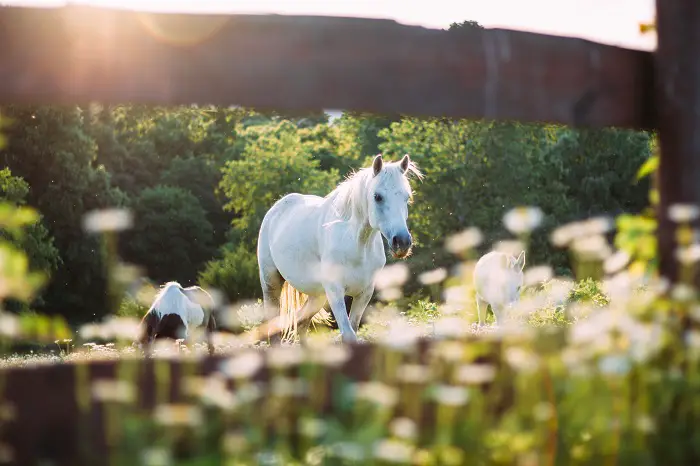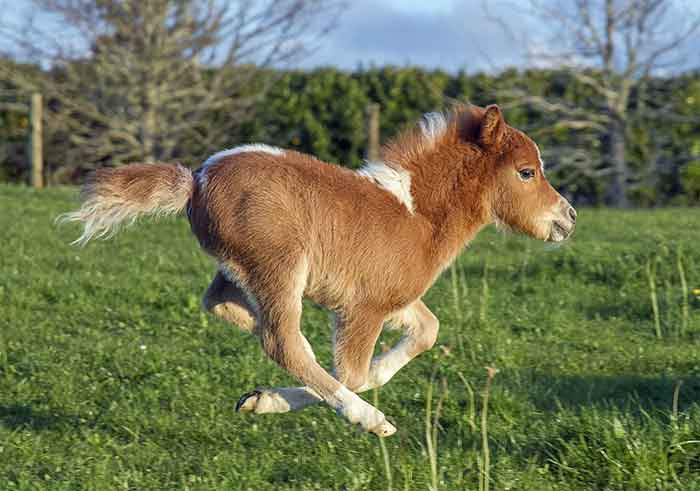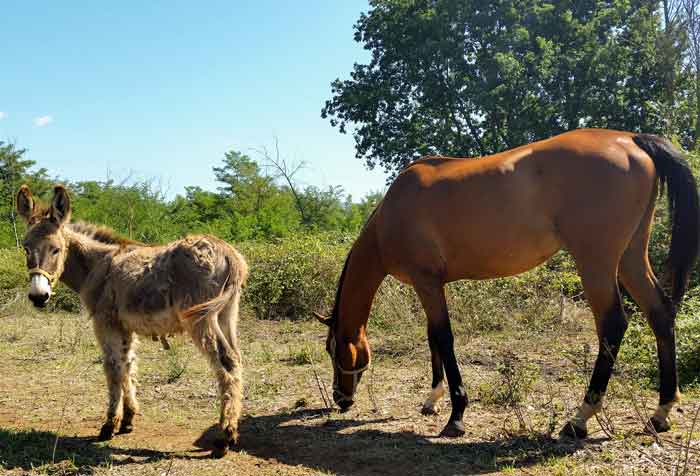Having an animal is quite the task; they cannot verbally express themselves, so you are left confused by their actions.
A big source of confusion is how often a horse should be ridden and for how long. Horses, like humans, get tired after exercise, so it is essential to know how to moderate riding.
How often should horses be ridden?
A horse should be ridden with enough rest time to recover from fatigue. The amount of time a horse spends being ridden should be in sync with their health condition and age. Your horse’s health should be your top priority when riding it.
However, since your horse cannot properly communicate fatigue, you need to observe its reaction.
Table of Contents

How Often Should a Young Horse be Ridden?
To refer to a horse as young, it should be less than five years in age. There are some factors to consider before riding a young horse.
Is the Horse Properly Developed?
At 1-2 years, a horse should not be ridden. The bone of the horse has not developed properly at this age. If you ride a horse of this age, you are putting it at risk.
However, from birth, you can employ stimulation training strategies without riding it prematurely. Training the horse can be as basic as teaching it to trust you and be comfortable with you touching it.
Is Your Horse Well Trained?
Often, it is advised to start training your horse to carry people later rather than too soon.
You can begin to train your horse to carry people at three years with a lot of break intervals. At four years, you can try more complex training.
How Often Should a Young Horse be Ridden?
To refer to a horse as young, it should be less than five years in age.
There are some factors to consider before riding a young horse:
Is the Horse Properly Developed?
At 1-2 years, a horse should not be ridden. The bone of the horse has not developed properly at this age. If you ride a horse of this age, you are putting it at risk.
However, from birth, you can employ stimulation training strategies without riding it prematurely.
Training the horse can be as basic as teaching it to trust you and be comfortable with you touching it.
Is Your Horse Well Trained?
Often, it is advised to start training your horse to carry people later rather than too soon.
You can begin to train your horse to carry people at three years with a lot of break intervals.
At four years, you can try more complex training. If these conditions are met, it is safe to ride a young horse minimally.
The horse is still getting used to your weight, so most of the riding at this age should be for training. Like a beginner in the gym should lift weights in moderation and have an even rest schedule.
A young horse should also be cared for in the same pattern. Walking, cantering, trotting, and galloping barebacked can be an exercise when it is resting.
How Often Should a Grown Horse be Ridden?
Grown horses are fully developed and strong. Grown horses can be ridden a minimum of three times and a maximum of six times a week.
It is important to take into account their health status while planning riding schedules. Also, it is necessary to observe them for signs of fatigue.
The amount of times a grown horse should be ridden depends on these factors:
- Are you riding the horse in preparation for a competition?
- Is horse riding just for its exercise?
- Your horse’s stamina
- What is the age of your horse?
- Is your horse injured and the healing time
Can Horses Be Ridden Every Day?
You shouldn’t ride your horse daily. It is in your horse’s best interest not to be ridden daily. If your horse is into competing, a certain level of fitness must be maintained.
It is advised for a polo horse to train twice a week vigorously and less vigorously twice a week. The other days can be spent resting or doing other exercises or resting.
Furthermore, it is always important to consider your horse’s health benefits while making plans. Once again, like with working out daily, it’s always best to do low-intensity workouts if you don’t want to have a rest day.
At What Age Should Horses Stop Being Ridden?
A horse is usually considered old from the age of 20 and above. From the age of 17, it is safe to ride the horse only for short durations.
However, horses can be ridden up till age 30, if your horse is healthy and does not suffer from any bone-related health problems. It should stop riding once it is 30 years old, even if it can be ridden.
Retirement age varies among horses. Some horses have to stop being ridden early on due to injuries, and some are so strong that they can be ridden in old age. One of the signs a horse wants to retire is when it is grumpy and does not enjoy riding anymore.
It is important to observe the horse for signs.
What’s the Minimum Amount of Exercise for a Stabled Horse?
The ancestors of horses spent their whole lives moving around. Compared to them, a stabled horse is not getting enough exercise.
In order to improve blood circulation, moving is necessary for a horse. The most minimal exercise a stabled horse should be doing is taking a walk. Exercise should not be limited to just taking a walk.
Staying in one position all day is difficult, and if it is achieved, it causes cramps even in humans. If you have a big field, let your horse roam around it.
It is necessary for the field to have a fence to prevent the horse from going missing.
Seven Benefits of Horse Exercise:
Like humans, horses need to exercise frequently.
The benefits of exercise include:
- Improvement in blood circulation
- Exercise keeps their muscles healthy and reduces the risk of muscle injuries
- Regular exercise helps in weight control
- While exercising, blood sugar is used; therefore, it regulates sugar levels. This is why diabetes is rare in horses
- Constant exercise paces and strengthens the heart
- Exercising increases life span
- Exercise improves balance and reduces the risk of falling
How Long Can You Ride a Horse? (Time and Distance)
When riding your horse, it is normal to care about how long the horse should work and rest.
Twenty minutes of exercise daily is good for the horse.
Here, we observe factors to consider when determining riding duration:
1. The Pace of Traveling
The riding pace is determined by distance covered. The speed depends on the gait.
| Gait | Distance (Mph) |
| Walking | 4mph |
| Trot | 8mph – 12mph |
| Canter | 12mph – 15mph |
| Gallop | 25mph – 30mph |
A horse can cover 32 miles in 8 hours while walking. Some horses would not like to be in a saddle for that long.
A fit horse can cover more than 32 miles while trotting, cantering, and walking.
2. The Weather Condition
Horses lose lots of electrolytes when they sweat. Losing so many electrolytes over a long period will cause health risks.
Warm weather will make them sweat more, and cool weather will make the sweat dry fast and be difficult to observe. It is important to make stops for food and water to replenish spent electrolytes.
If your horse refuses food when you stop to eat, it is a cue to stop because it is tired. Constant stops will reduce the amount of time spent riding.
3. The Travel Terrain.
The steeper the terrain, the more tension on your horse, so it is necessary to rest frequently in steep or sloppy terrains.
Generally, any terrain that stresses your horse should mean more rest.
4. Your Horse’s Health.
The distance per time depends on your horse’s complete well-being.
When traveling in a group of healthy horses, your horse may feel competitive. Horses usually follow each other’s pace, so it is important for you to set the pace according to the least fit horse.
Proper pacing reduces the risk of falling and fatigue while riding.
What Happens When a Horse is not Ridden Enough?
Horse riding is a great exercise for you and your horse. While riding is a good exercise, it is not necessary, provided the horse is doing enough amounts of exercise.
A big problem occurs when trying to ride a horse that has not been ridden in a while. An inactive horse gains extra weight that makes riding difficult.
Also, not riding a horse frequently can make the horse more stubborn with time. Although horses should not be overworked, regular exercise like riding helps keep them in shape.
Like humans that don’t work out daily struggle to reach maximum fitness, the horse would not reach maximum productivity. As it is not necessary to lift heavy weight to stay fit, your horse doesn’t need riding to stay healthy.
Finally, horses are really strong and have to be trained to accept humans on their backs. It is not safe to mount a horse that does not trust you. If your horse is not used to being ridden or is not trained, it is not advisable to ride it.
Riding such a horse will cause you a lot of injuries.
References:
How Often Should I Ride My Horse? What You Need to Know
WHAT IS THE AVERAGE DISTANCE A HORSE CAN TRAVEL IN A DAY?






